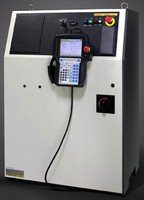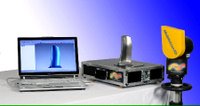Delcam to Demo PowerMILL 7 at MetalAsia Exhibition
Delcam will demonstrate the latest version of its world-leading PowerMILL CAM system in Asia at the MetalAsia exhibition to be held, from May 3rd-7th. PowerMILL 7 incorporates new and improved five-axis functionality for both roughing and finishing. Other enhancements include intelligent plunge milling, three-axis swarf machining and parametric surface finishing, together with faster calculation times and easier data management.
For rough machining, the range of five-axis strategies has been increased to match the wide list of options previously available for finishing. It now includes machining to or from a point, orientation through a line or curve, and programming using a reference surface. Using five-axis roughing can significantly reduce the number of set-ups needed to machine many components. It can also be used to give a more efficient cutting angle that will allow more material to be removed with each pass.
In addition, PowerMILL 7 can now generate a five-axis equivalent of any three-axis toolpath. This might be necessary when a three-axis approach is being used for most of a job but where some five-axis moves might be needed to avoid an obstacle or to machine as closely as possible to a steep face.
Better control over the point distribution within five-axis toolpaths has been provided to take advantage of the improved ability of modern machine tool controls to handle large amounts of data. Increasing the number of points in the toolpath can give more even machining with less vibration and more consistent loading on the tool. Both these improvements give a better surface finish and less wear of the cutter.
For both five-axis and three-axis roughing strategies, a new method has been introduced for ordering toolpaths so that air moves are further reduced. This will also make the ordering of rest roughing toolpaths more efficient.

